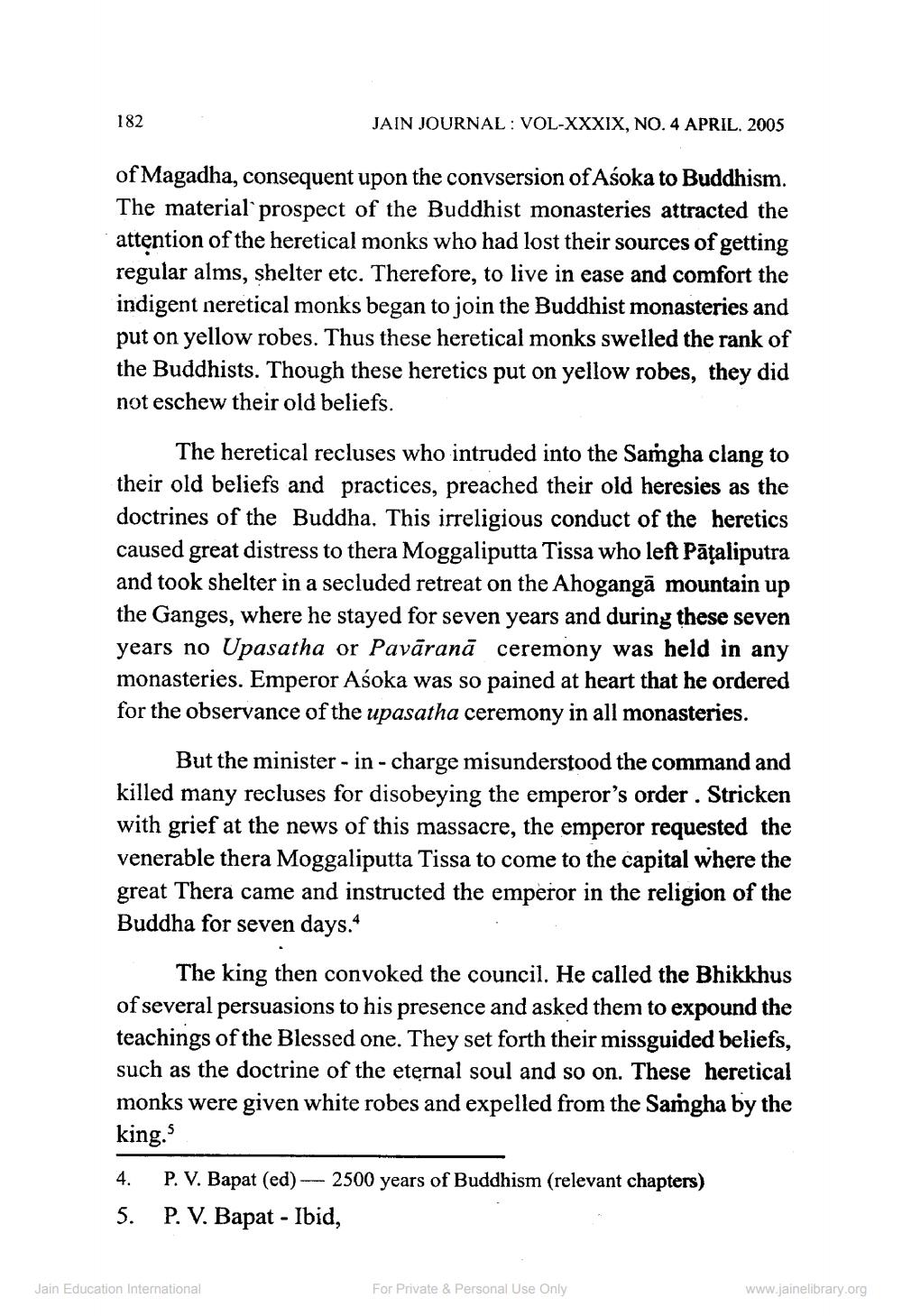________________
182
of Magadha, consequent upon the conversion of Asoka to Buddhism. The material prospect of the Buddhist monasteries attracted the attention of the heretical monks who had lost their sources of getting regular alms, shelter etc. Therefore, to live in ease and comfort the indigent neretical monks began to join the Buddhist monasteries and put on yellow robes. Thus these heretical monks swelled the rank of the Buddhists. Though these heretics put on yellow robes, they did not eschew their old beliefs.
The heretical recluses who intruded into the Samgha clang to their old beliefs and practices, preached their old heresies as the doctrines of the Buddha. This irreligious conduct of the heretics caused great distress to thera Moggaliputta Tissa who left Pataliputra and took shelter in a secluded retreat on the Ahogangā mountain up the Ganges, where he stayed for seven years and during these seven years no Upasatha or Pavārană ceremony was held in any monasteries. Emperor Aśoka was so pained at heart that he ordered for the observance of the upasatha ceremony in all monasteries.
JAIN JOURNAL VOL-XXXIX, NO. 4 APRIL. 2005
But the minister - in - charge misunderstood the command and killed many recluses for disobeying the emperor's order. Stricken with grief at the news of this massacre, the emperor requested the venerable thera Moggaliputta Tissa to come to the capital where the great Thera came and instructed the emperor in the religion of the Buddha for seven days.4
The king then convoked the council. He called the Bhikkhus of several persuasions to his presence and asked them to expound the teachings of the Blessed one. They set forth their missguided beliefs, such as the doctrine of the eternal soul and so on. These heretical monks were given white robes and expelled from the Samgha by the king.s
4.
5.
P. V. Bapat (ed)
P. V. Bapat - Ibid,
Jain Education International
2500 years of Buddhism (relevant chapters)
For Private & Personal Use Only
www.jainelibrary.org




